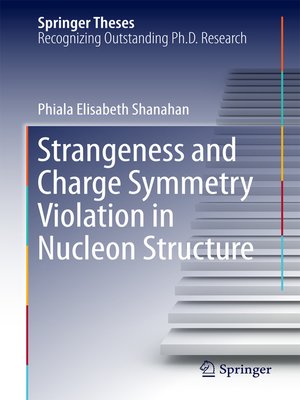Strangeness and Charge Symmetry Violation in Nucleon Structure
ebook ∣ Springer Theses
By Phiala Elisabeth Shanahan

Sign up to save your library
With an OverDrive account, you can save your favorite libraries for at-a-glance information about availability. Find out more about OverDrive accounts.
Find this title in Libby, the library reading app by OverDrive.



Search for a digital library with this title
Title found at these libraries:
| Library Name | Distance |
|---|---|
| Loading... |
This thesis discusses two key topics: strangeness and charge symmetry violation (CSV) in the nucleon. It also provides a pedagogical introduction to chiral effective field theory tailored to the high-precision era of lattice quantum chromodynamics (QCD). Because the nucleon has zero net strangeness, strange observables give tremendous insight into the nature of the vacuum; they can only arise through quantum fluctuations in which strange–antistrange quark pairs are generated. As a result, the precise values of these quantities within QCD are important in physics arenas as diverse as precision tests of QCD, searches for physics beyond the Standard Model, and the interpretation of dark matter direct-detection experiments. Similarly, the precise knowledge of CSV observables has, with increasing experimental precision, become essential to the interpretation of many searches for physics beyond the Standard Model. In this thesis, the numerical lattice gauge theory approach to QCD is combined with the chiral perturbation theory formalism to determine strange and CSV quantities in a diverse range of observables including the octet baryon masses, sigma terms, electromagnetic form factors, and parton distribution functions. This thesis builds a comprehensive and coherent picture of the current status of understanding of strangeness and charge symmetry violation in the nucleon.







